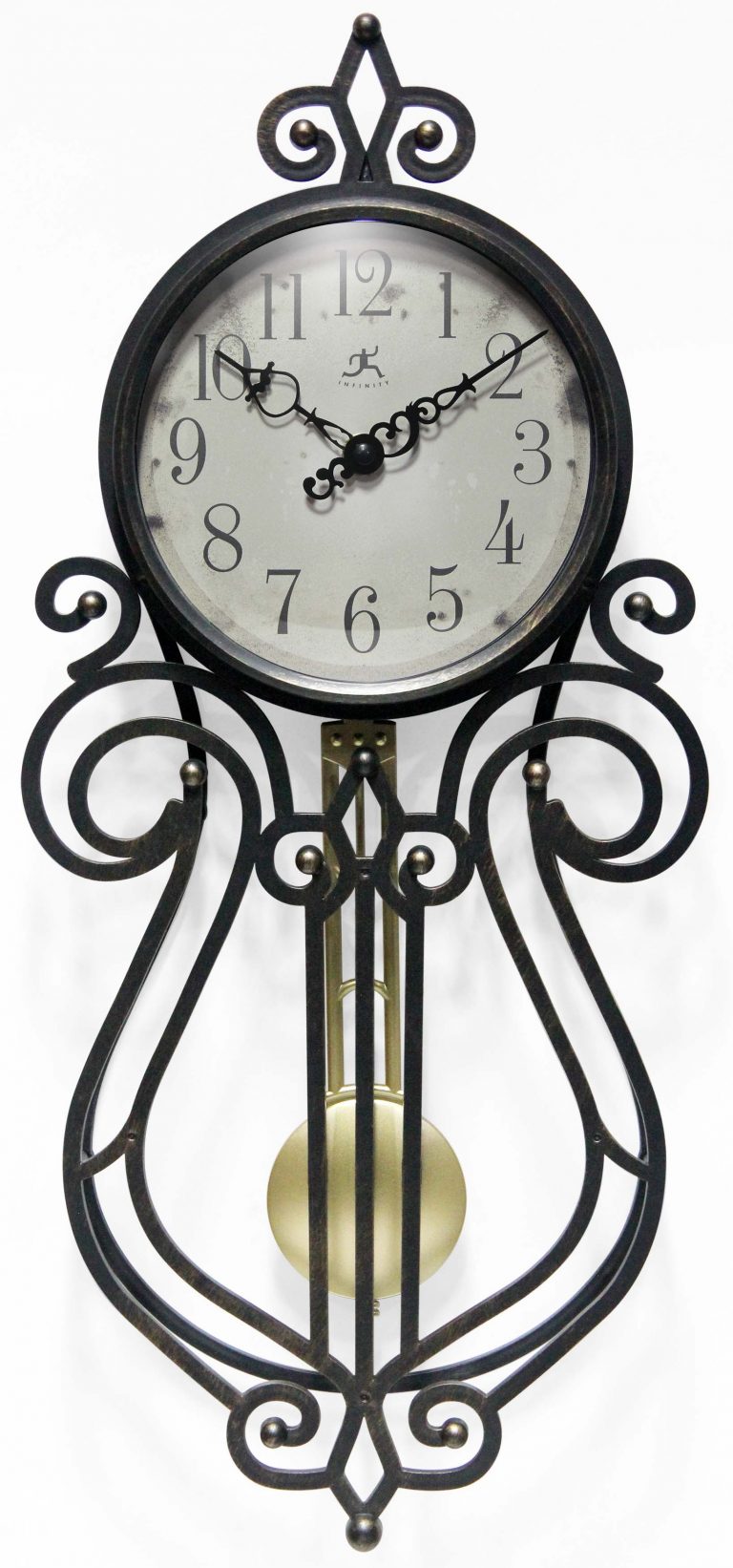Your cherished pendulum wall clock, a reliable timekeeper that once graced your walls, has abruptly fallen silent. Its rhythmic ticking has been replaced by an unsettling void. Whether it’s a prized heirloom or a modern masterpiece, fixing a pendulum wall clock can be an achievable task with the right knowledge and a steady hand.

Image: homyhomee.com
In this comprehensive guide, we’ll embark on a detailed journey through the intricacies of repairing a pendulum wall clock. With practical tips, expert advice, and an exploration of the latest trends, you’ll be equipped to restore your timepiece to its pristine ticking glory.
Understanding the Pendulum Wall Clock
Anatomy and Mechanism
A pendulum wall clock is a mechanical timepiece that utilizes a swinging pendulum to regulate time. The key components include:
- Pendulum: A weighted bob suspended from a rod or wire that swings back and forth.
- Escapement: A mechanism that releases the movement’s energy in controlled intervals, creating the ticking sound.
- Movement: The heart of the clock, consisting of gears and springs that drive the hands and power the pendulum.
- Wind Mechanism: Typically a key or lever used to manually power the clock.
As the pendulum swings, it engages with the escapement mechanism, which provides a periodic push to keep the pendulum in motion. This regulated motion accurately measures time.
Types of Pendulums
Pendulum wall clocks can feature various types of pendulums:
- Wooden Bob: A traditional pendulum made of wood, often with a brass or lead weight.
- Brass Bob: A solid brass pendulum, known for its durability and low maintenance.
- Gridiron Pendulum: A complex pendulum with crossbars to compensate for temperature changes.
- Cylindrical Pendulum: A cylindrical-shaped pendulum that minimizes air resistance.

Image: clockbyroom.com
Troubleshooting and Repair
Common Problems and Solutions
Here are some common problems you may encounter and how to troubleshoot them:
- Clock does not tick:
- Check if the clock is wound.
- Inspect for any loose or damaged connections.
- Clean the escapement mechanism.
- Clock loses or gains time:
- Adjust the pendulum length slightly using the regulating nut.
- Inspect the escapement for any defects.
- Check for friction or obstructions in the movement.
- Pendulum does not swing:
- Ensure the pendulum is suspended correctly.
- Check for any bent or broken suspension parts.
- Clean the pendulum bob and suspension wire.
- Clock runs too fast:
- Shorten the pendulum.
- Reduce the weight on the bob.
- Clock runs too slow:
- Lengthen the pendulum.
- Increase the weight on the bob.
In-Depth Repair Guide
For more complex repairs, it is recommended to seek professional assistance from a qualified clockmaker. However, for basic issues, follow these steps:
- Safety First: Unplug or remove the battery from the clock before disassembling it.
- Identify the Problem: Observe the clock’s behavior and identify the potential cause. Refer to the troubleshooting section.
- Disassembly: Carefully remove the clock face and any covers to access the movement.
- Inspection: Examine the movement, escapement, and pendulum for any visible damage or loose parts.
- Cleaning: Use a soft brush or compressed air to remove any dust or debris. Avoid using harsh chemicals or solvents.
- Repair: Based on the identified problem, perform the necessary repairs, such as cleaning contacts, replacing parts, or adjusting the pendulum.
- Assembly: Carefully reassemble the clock, ensuring all parts are properly aligned and secured.
- Testing: Wind or power the clock and observe if the problem has been resolved.
- Fine-Tuning: If necessary, slightly adjust the pendulum length or other parameters to achieve accurate timekeeping.
- Atomic Clocks: Precision timepieces that synchronize with atomic vibrations, providing unrivaled accuracy.
- Perpetual Clocks: Clocks that combine traditional and modern mechanisms to run continuously for years without winding or batteries.
- Smart Clocks: Digital clocks that connect to the internet for time updates and additional features.
- Nanomechanical Clocks: Miniature clocks that utilize nanotechnology for precise timekeeping.
- Handle with Care: Pendulum wall clocks are delicate instruments, so handle them gently to prevent damage.
- Clean Regularly: Prevent dust accumulation that can affect performance by gently cleaning the clock and movement.
- Regular Servicing: Have your clock serviced by a professional clockmaker every few years to ensure optimal performance.
- Avoid DIY Repairs: Complex repairs should only be attempted by qualified professionals to avoid further damage.
- Why does my pendulum clock keep stopping?
- It could be due to a loose winding key, lack of lubrication, or a damaged escapement.
- How do I adjust the pendulum to change the time?
- Shortening the pendulum makes the clock run faster, while lengthening it slows it down.
- What type of batteries do pendulum clocks use?
- Most modern pendulum clocks use AA or AAA batteries to power the movement.
- Can I use any oil to lubricate my pendulum clock?
- No, use specific clock oil for lubrication to avoid damaging the delicate mechanisms.
Latest Trends and Developments
The world of antique and modern clocks continues to evolve, with innovative materials and designs emerging.
As technology advances, timepieces continue to adapt, blending tradition with innovation.
Tips and Expert Advice
Enhance your clock repair skills with this wisdom from experts:
Frequently Asked Questions (FAQs)
To address common queries:
How To Fix A Pendulum Wall Clock
Conclusion
With patience, attention to detail, and the right tools, you can successfully repair a pendulum wall clock and restore its timeless charm. Whether it’s an antique heirloom or a modern masterpiece, the ticking of a repaired clock evokes a sense of nostalgia and the satisfaction of a job well done.
Embrace the art of timekeeping and embark on the rewarding journey of maintaining your cherished pendulum wall clock. Its rhythmic ticking will once again grace your walls, marking the passage of time with renewed splendor.